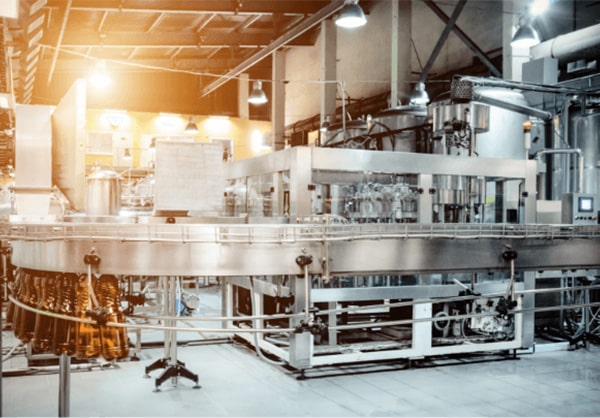
Harmful bacteria and microbes can spoil your products. If you’re packaging liquids or other items for sale, you need to consider the best types of preservation to protect your items until your customers can use and enjoy them.
Explore the differences between preservative systems and pasteurization to see how Maple Mountain Co-Packers can help you keep your products safe.
Why You Need a Preservation Strategy
Your products have a maximum shelf life. Whether you’re selling lotions and moisturizing creams or bottled coffee, juice, and other beverages, it’s essential to get your products to your customers before they expire. Packaging items with a short shelf life not only makes it difficult to get them to customers in time but also increases the health risks of a customer unintentionally consuming expired food or using expired beauty products.
There are many factors that affect the shelf life of items. As a food product, beverage, supplement, or skincare product is stored, microbes and bacteria can grow and affect its safety. This can happen very quickly with some items, like meat, while others naturally have longer shelf lives. Either way, preservatives can protect against harmful contaminants.
Methods of Preservation
From pasteurization to preservative additives, there are many options to keep your products safe and ready for your customers. What does pasteurization do? Find the answers you need to see how Maple Mountain Co-Packers services can help you protect your items and package them with a long-lasting shelf life.
A contract packaging partner can help choose a method of preservation and a packaging solution that complements your choice. From canning vegetables to preserving moisturizing creams, a co-packing partner can help you design and implement an effective solution for your products.
Pasteurization
Pasteurization is most commonly used to preserve milk and milk products. There are many types of pasteurization, including low-temperature long-time and high-temperature short-time treatments.
Also known as the kill step, pasteurization is designed to maintain high-quality standards and kill harmful bacteria. It can remove harmful enzymes, bacteria, and pathogens in milk products, extending their shelf life to seven or more days.
Because pasteurization is designed to reduce microbial populations, it’s not always the best option for every product. Some items benefit from microbes, so you may wish to use another method to prevent harmful bacteria without affecting beneficial microbes.
Preservative Systems
There are many different ways of processing food and cosmetic products to reduce the risk of spoilage. Preservative systems vary depending on the product you use. They can be divided into natural preservative strategies and additives.
These options can extend shelf life and reduce the amount of discoloration, but they can alter the texture, color, flavor, and nutritional qualities of the product. For example, pickling vegetables in vinegar can cause fermentation, altering the flavor and texture of the vegetable.
Most natural strategies are limited in nature. For example, brining works well for some meat products, while freezing requires careful packaging and storage.
Instead of relying only on these strategies, some liquids are best preserved with additional agents. Here are some examples of preservative systems that prevent the growth of microbes:
- Biocidal agents
- Sanitizing agents
- Sulfiting agents
There are other preservative agents, such as parabens, sulfates, and nitrites, that are currently being reviewed in terms of health effects. Many consumers are concerned with the possibilities of these preservatives being linked with health issues, so you may wish to avoid these additives to avoid causing concerns with your products.
Low pH Products
Another preservation strategy is pH regulation. By maintaining low pH levels in your products, you can prevent the growth of microbes.
The pH scale is used to measure the acidity of a product. Low levels on the pH scale, or anything under seven, is considered slightly or highly acidic. High levels on the scale, from seven to 14, are considered slightly or highly base.
Some microbes, like salmonella and E. coli, don’t fare well in highly acidic environments. Maintaining low pH levels in your products may be a suitable alternative to pasteurization or adding preservatives.
Explore options for altering the pH of your product. Some naturally have low pH levels, while others may require an additive to regulate the levels. Either way, it’s most effective to combine this strategy with another preservative system for maximum safety.
The Best Preservation Strategy
How do these types of preservation compare? Your Utah-based team at Maple Mountain Co-Packers recommends using two methods for any single product. This dramatically reduces the risk of early spoilage or bacterial contamination.
For example, consider using both pasteurization and a preservative system in your milk products. Lotions and creams may be best preserved with pH regulation and preservative systems.
Doubling up on strategies can extend product shelf life and protect against a wider range of contaminants. Discuss the best strategies for your particular product with Maple Mountain Co-Packers to avoid compromising nutritional value or causing bottles to swell.
Preserve Your Products With Maple Mountain Co-Packers
If you’re feeling overwhelmed with the different ways of processing food and liquid products, then it’s time to work with a contract manufacturing packaging partner.
Choose Maple Mountain Co-Packers in Utah for full-service support regarding preservation and packaging strategies. Explore packaging services today to see how you can launch a new product line or extend the shelf life of your products.